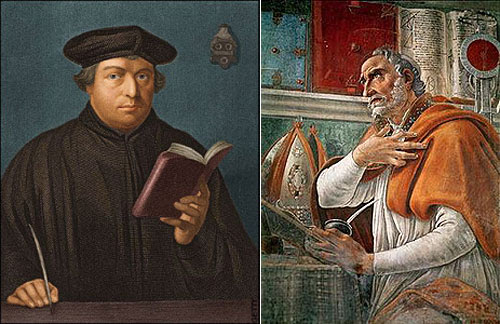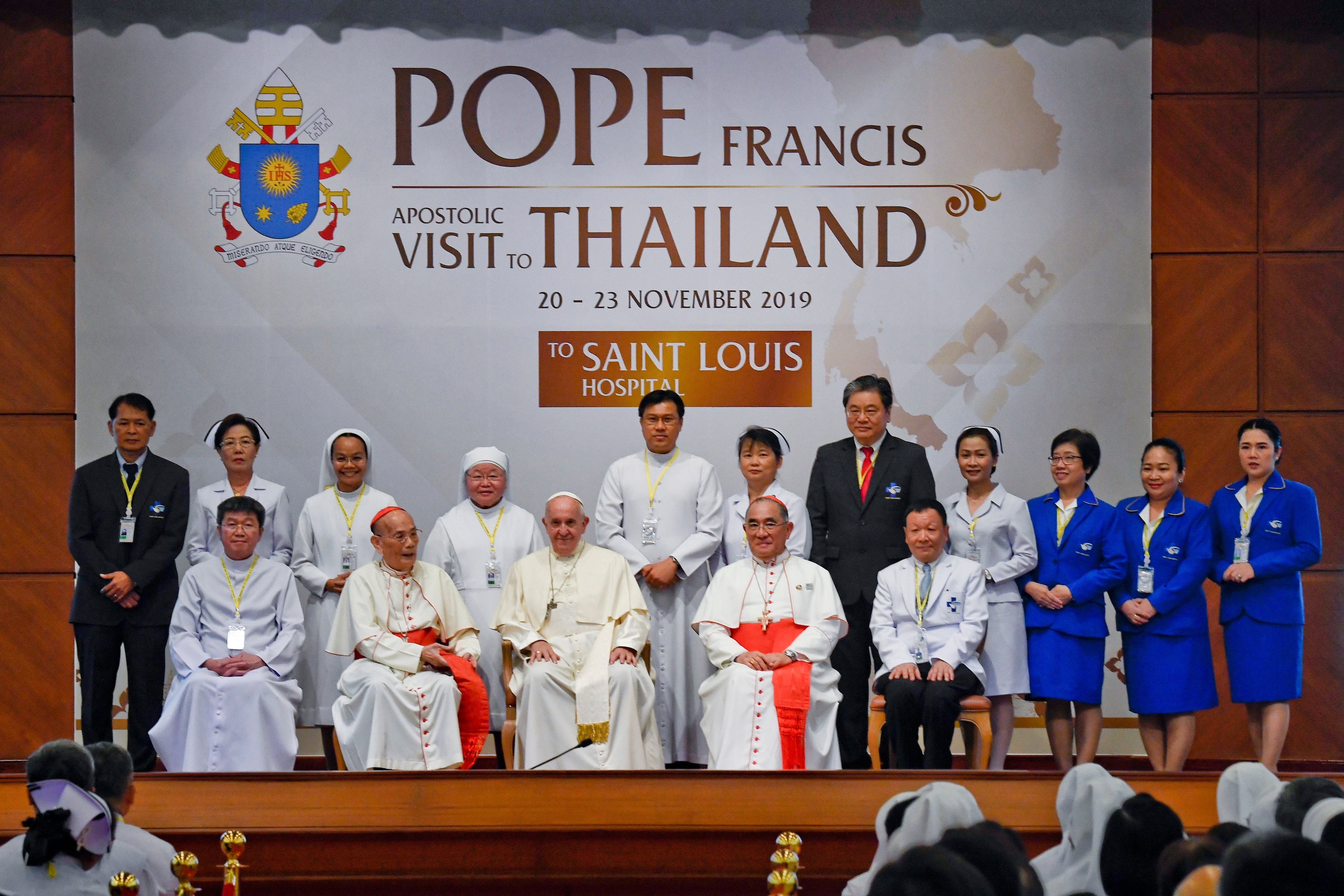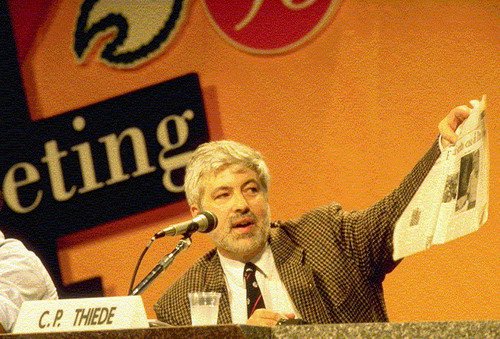Nehemiah and Martin Luther
Part Two:
Saint Augustine and Luther
“Actually, Augustine and Luther were similar in many ways.
Both achieved fame and influence from the geographical and political edge of the known civilized world …. Both were self confident and self reflective at the same time.
Both were well educated and exceptional in the use of language.
Both enjoyed and even reveled in controversy, and a good bit of what each wrote was against something or someone.
Both were troubled and sought a sense of self that would bring a measure of peace”.
Farley Snell
Farley Snell thus introduces his paper, “Augustine and Luther: A Tale of Two Worlds” (2014): https://olliasheville.com/sites/default/files/Instructor_Handouts/SnellFarley/AUGUSTINE%20AND%20LUTHER--A%20TALE%20OF%20TWO%20WORLDS.pdf
Introduction
Augustine and Luther Compared and Contrasted
Augustine of Hippo (354-430 CE) and Martin Luther (1484-1546 CE) are not only two of Western Christianity’s most influential thinkers. Their lives and views provide a window into the times in which they lived, and an opportunity for us to embrace, alter or reject what they thought.
Augustine was a bishop of the Roman Catholic Church in North Africa from 395 until his death in 430. He is most widely remembered for his autobiographical meditation Confessions in which he tells of his various personal struggles culminating in his conversion in 386, while in Italy for the only time in his life. What has attracted the most attention is his sexual struggle (people often quote his prayer, “Grant me chastity and continence, but not yet”), and what has drawn the most blame is his consequent view on sex and human nature. His ideas on sexuality and marriage-- understood by few, and dismissed by many-- have fomented debate, especially in the modern era.
But his significance lies beyond this narrow (and even inaccurate) focus. His ideas have persisted, been debated, altered, rejected by some, affirmed by others. This is especially true of his own version of the idea of original sin (whereby all persons are born with a defective moral nature and with guilt). The same can be said of his ideas on grace and free will, accompanied by his teaching on predestination, which were reworked over the centuries, and which played a major role in Reformation thought. When Thomas Aquinas, the great Catholic thirteenth century theologian, stated that “grace does not destroy nature, but completes it,” he drew on the newly rediscovered works of Aristotle to discuss “nature,” and on Augustine to discuss “grace.” 2
Augustine’s understanding of God influenced most subsequent forms of western mysticism, as well as Anselm’s ontological proof of the existence of God in the eleventh century.
His treatment of the two “cities” in City of God formed a basis for western monasticism. It played out in the medieval struggles between emperor and pope, and to some extent in discussions of church and state. His discussion of time (Confessions, XI) and his effort at a Christian philosophy of history in City of God have had continued influence. His version of the just war theory has been appealed to in many instances, but considered an oxymoron by many critics.
Luther was an Augustinian monk who taught at a newly formed university in Wittenberg in what was then Electoral Saxony (part of present day Germany). In 1517 his criticism of papal indulgences eventually led to the breakup of western Christianity (eastern and western Christianity parted ways in 1054), a breakup that had dramatic and continuing political and social impact on Europe and subsequently the New World.
In popular imagery he is remembered for being the champion of individual conscience (as a result largely of his “Here I stand” speech before the imperial Diet at Worms in 1520). He is credited with wresting authority from the papacy by appealing to Scripture alone (sola scriptura). In like manner, he is appreciated for having made the Bible available to common folk (he translated both Testaments into German). His idea of the “priesthood of all believers” is seen as freeing the individual from the domination of the clergy. His views of the “two realms” (the distinction between the political and religious realms) and his words on the peasants’ revolt have been seen as supporting the totalitarianism of the Third Reich. The holocaust in like manner has been traced to his anti-Semitism. His central teaching—justification apart from works of the law—has been embraced by many, but attacked by others.
Actually, Augustine and Luther were similar in many ways. Both achieved fame and influence from the geographical and political edge of the known civilized world (Augustine in Hippo in North Africa and Luther in Wittenberg in Electoral Saxony). Both were self confident and self reflective at the same time. Both were well educated and exceptional in the use of language.
Both enjoyed and even reveled in controversy, and a good bit of what each wrote was against something or someone. Both were troubled and sought a sense of self that would bring a measure of peace. Consequently, both—though in distinctive ways—had a negative appraisal of human effort and championed divine initiative or grace.
One could say that both ended their lives embittered. All of this within an understanding of scripture and Christian teaching.
But they lived in different worlds. For one thing, Augustine lived in a time when the Roman Empire sought with some success unity and stability, and a coherent and unified Christian doctrine and church to be the foundation of the Empire’s goals. By Luther’s time, what was left of the old imperial aspiration—in the form of the Holy Roman Empire—was weakened by external threats from the Ottoman Empire and by disintegration from within. And the Roman Church was itself beset by forces such as the conciliar movement.
More to the point, however, was that each struggled to give definition to the self in radically different intellectual settings. Augustine records his long search (ending in his conversion) in his historic autobiographical meditation, the Confessions. His experience of being driven by external satisfactions (what has traditionally been called “lusts the flesh”) left him unsatisfied, as did his preoccupation with what is partial, epitomized by the individual. Augustine felt the need, within himself and within the reality of which he was a part, to discover what is lasting rather than passing, and what is whole rather than what was partial—and to find his place within it. (This is one of the meanings of “mysticism.”) This was his “world.” 3 ….
[End of quote]
Likewise, we read at:
That Augustine was an influence on Martin Luther is undeniable; different historians and theologians, however, vary in opinion as how great this influence actually was. Luther joined the Order of Saint Augustine at Erfurt in July 1505, and received a spiritual formation that focused on “Great Father Augustine” (which also was the title of a hymn then in Augustinian use).
The Order used Augustine’s thought in the theological preparation given to its candidates. One of Augustine’s superiors, Johann von Stauptiz O.S.A. (1468-1524), gave Augustine especial emphasis. It is certain, therefore, that Luther had read and studied many of Augustine’s writings, that he memorised passages from Augustine, and that he cited Augustine more than any other non-Scriptural source.
It is known, for example, that Luther used a copy of the printed collection of some works by Augustine that had been published in Strassburg by Martinus Flach in 1489 under the title of Opuscula plurima, for Luther with his own hand wrote annotations on its margins in 1509. And in 1516 Luther was known to have been studying the eighth volume of the Opera Omnia (the world's first complete printed collection of Augustine's works) edited by Johannes Amerbach in eleven volumes in Basel in 1506
Specialist studies of Luther’s writings have determined the wide range of Augustine’s works that Luther cited. Luther was one of the first major figures to have readily available to him the ‘entire Augustine’ in the Johann Amerbach printed edition of Augustine’s Opera omnia ("Complete Works") mentioned above. Luther was not only trained in a theology that was heavily Augustinian, but also found resonance in Augustine’s thought for some of the theological issues with which he himself struggled, e.g., sin, grace, predestination, the interpretation of Scripture, and faith.
He initially made his own the basic tenets of Augustine’s theology. This is most evident in his work as a professor at the University of Wittenberg before the time he posted his now-famous ninety-five theses on the castle church there on 31st October 1517. Luther encouraged his fellow professors to read Augustine’s works. Augustine was the patron saint of the university. With the public eruption of the Protestant Reformation in 1517, Luther did not abandon Augustine, but used him selectively and sometimes out of context in an effort to support the changed direction of his own line of thought.
There became large areas of thought where Luther diverged from Augustine, e.g., in matters regarding the authority and magisterium of the Church. Even so, Augustine’s thought was still frequently used as the base from which Luther’s theology proceeded. As Luther matured, his theology became increasingly independent of Augustine, but he continued to praise Augustine. Further historical and theological research remains to be done on Augustine’s influence on Luther at various stages of the latter’s life.
In the development of his theology, Martin Luther turned to the writings and thought of Augustine more than to any other individual source except the Bible. In Augustine of Hippo (354-430) there was a firm position on many of the issues that were to become the focus of controversy during the Protestant Reformation. Indeed, for this reason Augustine has been regarded as a determinative church source for the theology that constituted the Protestant Reformation.
….
It has been demonstrated that Luther began studying Augustine as early as 1509, when he was twenty-six years of age and in his third year as a member of the Order of Saint Augustine. He quickly became enthralled by the writings of Augustine. Luther became thoroughly acquainted with them. This was not merely because he was a member of the Order of Saint Augustine, but rather because of the intrinsic value and truth he found in them. Later he wrote, "I do not defend Augustine because I am an Augustinian. Before I began reading his works he meant nothing to me." The theology of Augustine was held in great esteem by Luther, and promoted widely while he was at Wittenberg. Luther even described Augustine as a leading advocate for reform in the church.
Even so, further specialist study needs to be done on the thought of Luther at various periods of his life, for there were times when he used Augustine's writings possibly only because they were a convenient resource. There are also instances wherein Luther quoted Augustine quite selectively to suit his own purpose, and suggested that Augustine resonated with Lutheran reasoning when the fuller context of Augustine's writing in fact would demonstrate that this was untrue.
As Luther grew older and more independent in his thought, Luther turned less to Augustine. Even in his early writings at the time when the Reformation erupted, Luther did not merely reproduce Augustine's thought. It is true to say that sometimes the germ of Luther's ideas were already present in Augustine's writings, but it is not correct to attribute to Augustine more credit for Luther's own thinking than that. Even in the writing of the most mature Luther, Augustine was often the starting point, but only that.
….
Link
Was Luther Augustinian? This blog says that this question is difficult to answer from a historical perspective because more concrete evidence must be documented to show that Luther was influenced by Augustine. ….
For Part One of this series see:
Nehemiah and Martin Luther




